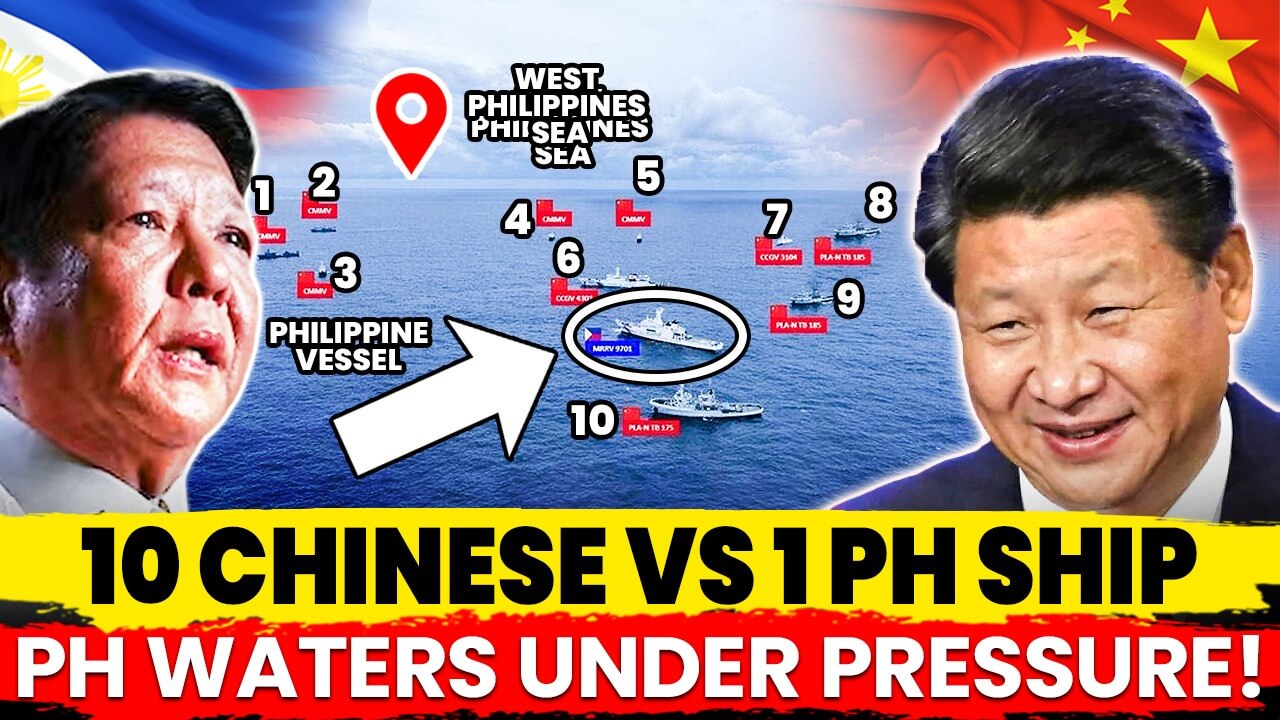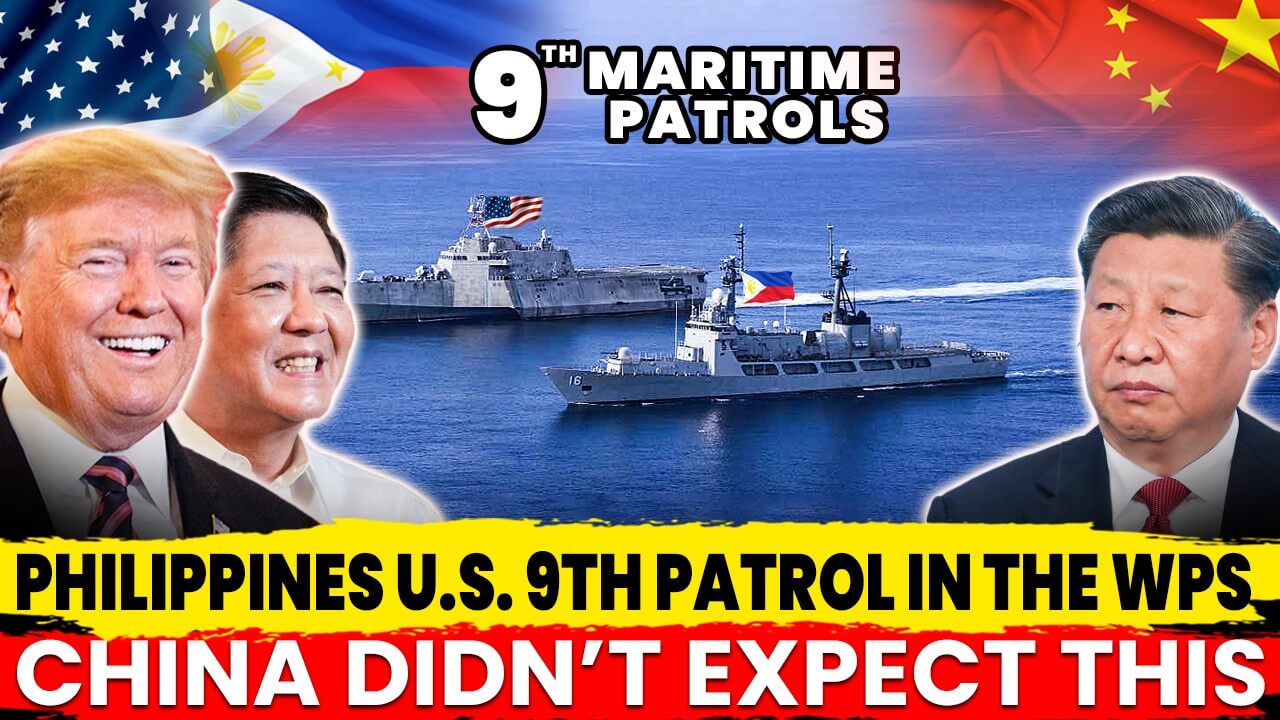In recent developments, the Philippines Coast Guard has expressed deep concern over the gathering of a substantial number of Chinese maritime vessels, exceeding 135 in number, at Whitsun Reef. This reef falls within the exclusive economic zone of the Philippines in the South China Sea. The Philippines has responded with alarm to the increasing presence of Chinese boats at Whitsun Reef, emphasizing the strategic significance of this location, which is part of the disputed Spratly Islands claimed by both nations. Adding complexity to the situation is the geographical distance between Whitsun Reef, also known as Julia Reef by the Philippines, and major Chinese landmarks. Hainan Island, the nearest Chinese territory, lies over 1,000 kilometers away. This spatial context raises questions about the purpose of the Chinese vessels’ presence, suggesting a deliberate strategic move rather than a mere response to natural conditions. The Philippines has taken a proactive stance by deploying vessels for monitoring purposes in response to what it perceives as a forthcoming chance and an act of aggression by means of China in the South China Sea.
The tensions at Whitsun Reef have no longer most effective strained family members between China and the Philippines but have also brought on collaborative efforts with Australia. Both countries have engaged in joint air and sea patrols, presenting a unified front against Chinese assertiveness in the region. Furthermore, the United States has indicated its involvement by planning to deploy ground-based missiles, escalating the geopolitical tensions surrounding Whitsun Reef.
In a broader ancient context, the South China Sea has consistently been a focal point for maritime tensions. The present-day scenario at Whitsun Reef is reminiscent of the ancient disputes over territorial claims in the location. The Philippines, with the backing of its allies, is decided to assert its sovereignty within the face of Chinese expansionism, mirroring a pattern of geopolitical war inside the South China Sea. As the state of affairs unfolds, the balance of energy within the vicinity is at stake, and the world watches with heightened challenge. The Philippines’ resolute stance, coupled with international collaboration, underscores the complexities and global significance of this reef.
The swarming activities of Chinese Maritime militia vessels in Julian Felipe Reef have increased from 111 to 135, indicating escalated tensions in the West Philippine Sea. The National Security Council assistant director General Jonathan Malaya expresses concern over China’s aggressive stance in claiming the reef and notes the prompt opposition from the national task force, dispatching Philippine ships to the area. Coast Guard vessels from the Philippines were sent to Julian Felipe Reef to assert sovereignty, while Chinese Coast Guard and Maritime militia vessels are also present, raising territorial concerns. The Philippines has conveyed dissatisfaction with China’s swarming activity, but International Studies expert Professor Rato Dasas sees swarming as just one tactic in China’s broader strategy to control a significant portion of the South China Sea. Professor Dasas emphasizes the need for Filipino unity in responding to the challenge, highlighting the importance of strengthening the Philippine Coast Guard and Armed Forces to safeguard the region.
The South China Sea stands as a theater for complex and enduring disputes centered on territorial sovereignty and maritime rights, involving a myriad of nations, including China, Taiwan, Vietnam, the Philippines, Malaysia, and Brunei. At the core of these tensions lie several interlinked issues that have persisted over time. Central to the conflicts are territorial claims, with China asserting dominance over the Paracel Islands, Spratly Islands, and Scarborough Shoal through its infamous new “ten-dash line.” This claim, rooted in historical narratives and geographical features, conflicts with the overlapping claims of neighboring nations. Resource rights further fuel the disputes, as the South China Sea is believed to be rich in natural resources, including oil and natural gas, making control of the region and its assets a coveted objective. Additionally, the strategic importance of the South China Sea as a major shipping lane, facilitating about one-third of the world’s trade, introduces concerns about navigation rights and potential disruptions to global trade.
Key players in the South China Sea disputes include China, which considers the region a core national interest and has taken assertive actions to enforce its claims, including the construction of artificial islands and military deployments. Vietnam opposes China’s expansionist actions and actively seeks international support. The Philippines, also contesting China’s claims, has pursued international arbitration and forged military alliances to counter growing Chinese influence. Taiwan, claiming the entirety of the South China Sea, collaborates with other claimants to challenge China’s dominance. Malaysia and Brunei, with smaller claims, generally align with the ASEAN consensus, emphasizing peaceful dispute resolution and freedom of navigation.
International responses to the South China Sea disputes have manifested through organizations such as the Association of Southeast Asian Nations (ASEAN), which has endeavored to broker a peaceful resolution. ASEAN proposed a Code of Conduct for the South China Sea, although progress has been impeded by China’s reluctance to agree to binding provisions. The United States has declared a national interest in ensuring freedom of navigation and has conducted freedom of navigation operations (FONOPs) to challenge China’s territorial claims. Other nations, including Australia, Japan, and India, have expressed concerns about China’s actions and advocated for peaceful resolutions.
Amidst these complexities, the risks and potential implications loom large. The escalating tensions heighten the threat of navy war between China and other claimants, with ability worldwide repercussions. Disruptions to maritime change within the South China Sea could have profound impacts on the world financial system. The unresolved disputes and heightened tensions additionally pose a broader chance, destabilizing the Southeast Asian place as an entire. The delicate balance of power in the South China Sea not only shapes the fates of the involved nations but holds implications for global geopolitical stability.



